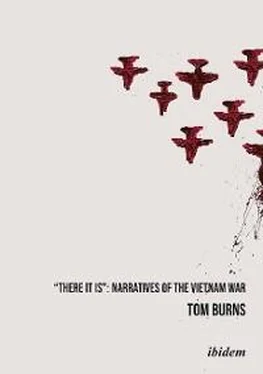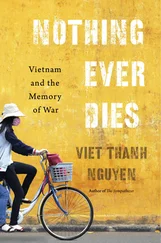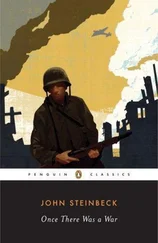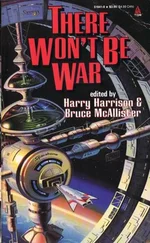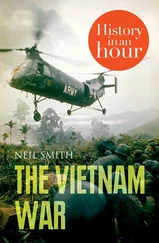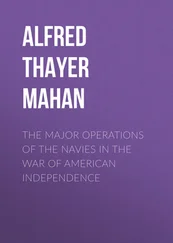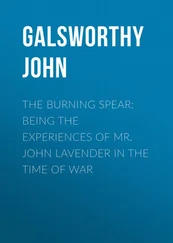1 ...6 7 8 10 11 12 ...40 “We’ll never stop them.” 77
In this aspect—a much greater individual commitment to winning the war—the soldiers of the NVA and NLF were, ironically, akin to the Allied soldiers of World War II who were the cultural touchstone of the young American soldiers who went to Vietnam. The notion of the necessity of decisively defeating the enemy before going home, ingrained in the combatants of World War II, was regarded as hopeless by their American counterparts in Vietnam. With the lack of any territorial gains—those defined “lines” that moved slowly but relentlessly forward toward Germany and Japan, the enemy homelands—how could progress toward victory be measured? By the staff, it was measured by the “body count,” a consequence of General Westmoreland’s declaration that the conflict was a war of “attrition.” The sole concern of the lowly American soldier in Vietnam therefore was to avoid becoming a statistic by lasting out his individual tour of duty—exactly one year (thirteen months for Marines). “How many days?” became the overriding question, from which arose the frequently evoked superstitions and comic cult practices (jokes, calendars) of the “short-timer,” the man who had a only short period remaining before being recycled back to the US. The short-timer phenomenon may have actually increased anxiety because it ensured a greater degree of individualism and lack of cohesion in the unit. No one wanted to die when he had only a short time to return to the “World.”
American soldiers, who were well trained and equipped, are reported to have fought well up to 1968, when the suffering and frustrations of taking part in a war they realized they could not win begin to take their toll. Combatants felt keenly the futility of a war whose progress was based on body counts rather than conquered territory, and they understood the tactical weakness of search-and-destroy missions, which drew fire from a well-concealed enemy on the ground, who could then be shelled by artillery or bombed, strafed, rocketed and napalmed by US aircraft. Being used as “bait” to draw enemy fire was, unsurprisingly, deeply resented.
Once the troop withdrawals began in 1969, the continuation of the war became even more pointless to those fighting it. Discipline broke down in some units and became weaker overall, as seen by the increase in the shirking of patrols and “fragging” attacks on officers (2000 reported incidents, in which, for example, a fragmentation grenade is thrown under an officer’s bunk), as well as milder forms of protest like the wearing of peace signs and helmet graffiti. Evidence of relaxed discipline may be also seen in attitudes (racial tensions) and practices (drug use) imported from the US. A large number of men smoked Cannabis both on and off duty, and a significant number (an estimated 10%) were doing hard drugs like heroin to bear the pressure. 78These numbers suggest that the military was now manned by draftees who were not ready to die for what they perceived as an abandoned cause. 79
iii. The Narrative Literature of the War
The literature of the Vietnam War has been to a great extent the production of the men who fought it and reflects the conclusions about the American soldiers reached in the previous section. This literary production, in all its variety, constitutes the “American Literature of the Vietnam War,” as Stewart O’Nan has properly called it. 80It is worth recalling that the war is called the American War by the Vietnamese. There are now a growing number of works written by Vietnamese-Americans that are taking their place within the corpus of Asian-American literature, as well as imaginative works written by non-Asians about Vietnamese immigrant communities in the United States. 81
The most notable fictional work written by a Vietnamese American is Viet Thanh Nguyen’s superbly written The Sympathizer (2015), about the fall of Saigon and its aftermath. The unnamed narrator is a “spook,” but “one able to see any issue from both sides.” His narrative is a “confession” to his Communist superiors, written in a re-education camp, about his time served as the aide-de-camp and intelligence officer to an ARVN general during the time in which he was actually an infiltrated NVA spy. The novel shows him to be sympathetic to both the cause of North Vietnam and the plight of the people of the defeated south, as well as a close observer of American politics and culture. 82
The radical critic Don Ringnalda has argued against the possibility of any narrative representation of the war “getting it right” because of the ineffectiveness of any master narrative to explain such a complex event. This may be true, but every narrative adds something to the whole picture and most fictional narratives of war, especially those written by subalterns or enlisted men have always focused on a limited field of action. Ringnalda views these narratives as simultaneously attracting and repelling. Aestheticising war is perhaps impossible to avoid completely despite the depiction of its horrors (cf. the Iliad ), but readers must reflect—something that is more difficult for filmgoers, who are willing voyeurs—on war as spectacle versus war as historical moment.
Most of the narratives discussed here focus on the American soldier, but there is a broader perspective in the earlier literary works that reflect the period before the United States became the overwhelming presence in Vietnam, as well as in the later works that reflect social and cultural concerns that go beyond the war itself. Although the Vietnamese people are explored in the exile and immigrant literatures mentioned above, as well as in the plethora of historical and cultural studies that followed the war, in the American novels, autobiographies, and memoirs of the war discussed in this book the Vietnamese tend to be stereotyped. As O’Nan puts it: “In work after work, Vietnam and the Vietnamese are merely backdrops for the drama of America confronting itself.” 83The anti-war feminist writer Lynne Hanley states the situation more bluntly:
…virtually all our well-known representations of Vietnam in literature and film ask us, first and foremost, to pity the white American soldier—to share his guilt, to weigh his wounds, to forgive his degradation, to understand his loyalties, to admire his endurance, to appreciate his betrayal, to recognize “the superior spiritual status” of the American soldier “trapped by history, dragged down into the animal mud” of Vietnam.” 84
Hanley’s assessment is harsh, but with the exceptions discussed in Renny Christopher’s book on exile narratives, it is undoubtedly true. At the same time, one might ask what these unprofessional soldier-writers were supposed to write about if not their own experiences, and it seems that the indictment Hanley makes of the American literature and films for their “shockingly thin version of the Vietnamese” in the representations is not a condemnation of the soldier-writers but of American society and culture as a whole. As she observes, and as Frances FitzGerald shows again and again in her book Fire in the Lake (1970), the failure to understand the Vietnamese “was very close to the heart of our problems in that country.” 85
Because most of the war narratives were written by veterans, they have also been included in what is called the “literature of trauma,” thus connecting them with survivor narratives from other wars and other kinds of traumatic experiences, a grouping that makes explicit the status of the veteran as victim. Although certainly not all veterans would classify themselves in this way, the classification has the merit of showing how their narratives are “the product of three coincident features: the experience of trauma, the urge to bear witness, and a sense of community.” 86Through their narratives, these soldier-writers have borne witness to, and, to some extent, come to terms with their traumas while at the same time establishing common ground—a community—with other survivors. 87
Читать дальше
